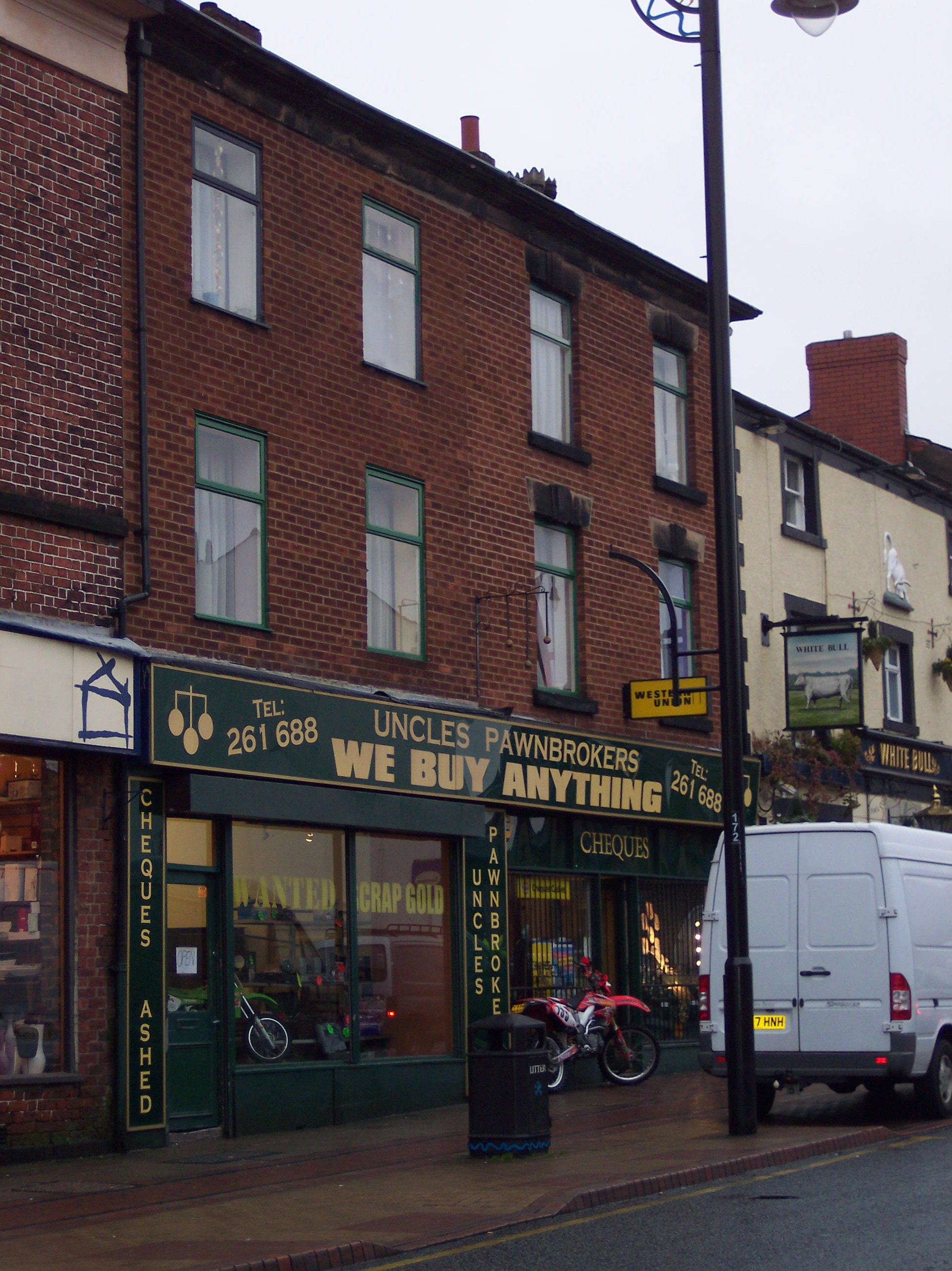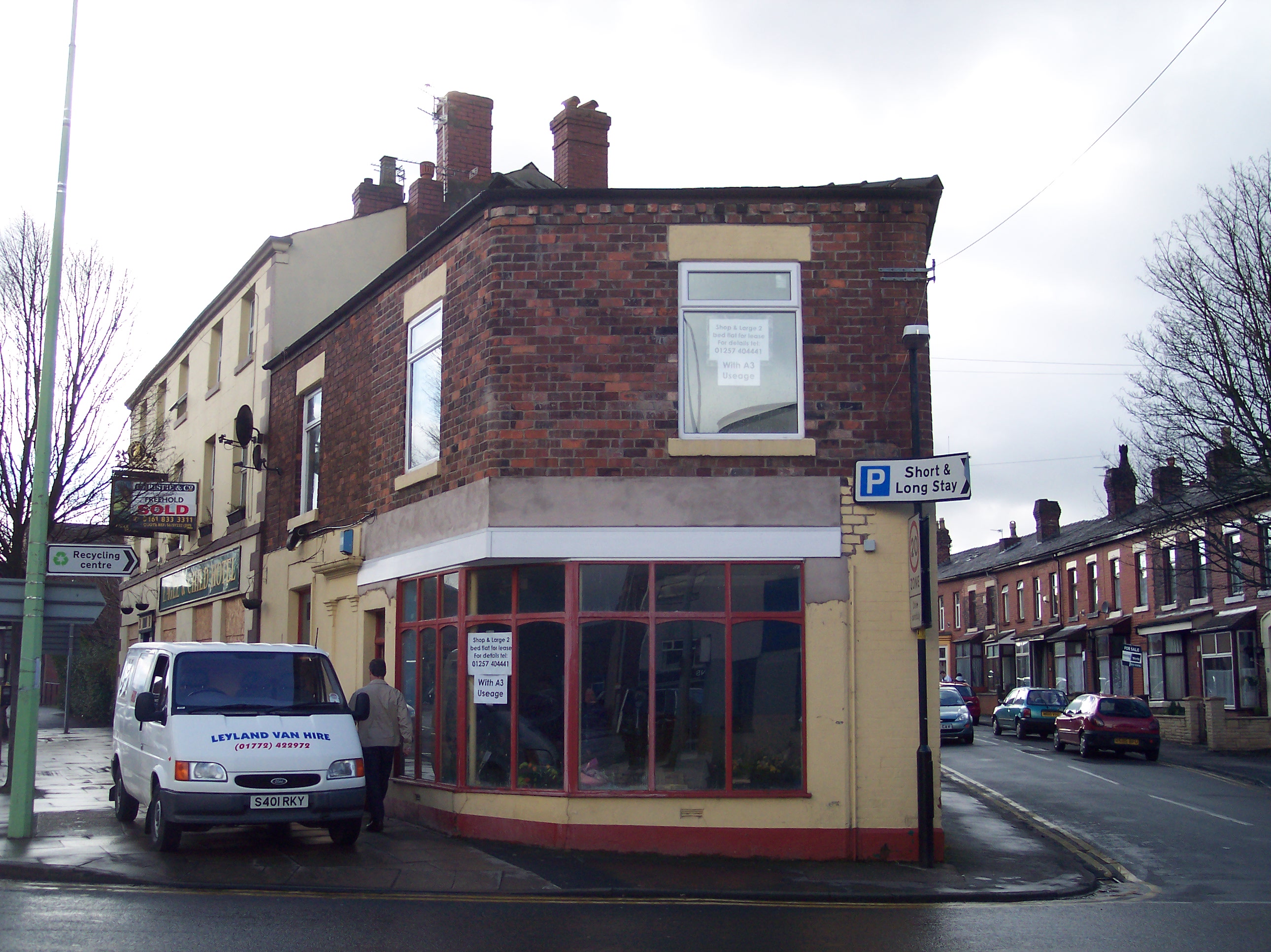| |
My great great grandfather John Rigby was born in 1837 in the village of Croston, now famed for its quaint buildings and community spirit. However by the time he was three his parents had moved to the town of Chorley.
His father Samuel was a hand loom weaver, and cotton thread may have been more readily available in town, although there would be competition from power looms in factories, such as Lightoller's, a short walk from the family's new home in Queen Street.
John must have had some sort of education, but school attendance was anything but compulsory, and cost money. With a growing family, it is unlikely that Samuel could afford to pay for much in the way of education.
By 1851, the family had moved to Moor Street, closer to Chorley's main street. John was now a 13-year-old factory hand. Almost certainly the factory was in the cotton industry, but there were both spinners and weavers in the district.
John, though, was growing up. Children in those days were expected to either earn a wage and so improve the finances of the family, or get married and start a family of their own. In 1856, John disappeared to Wigan, and married Alice Preston, who had lived on Bolton Street in Chorley. The trip to somewhere where the couple were not known may have something to do with the birth, only seven weeks later, of Margaret Ann, who unfortunately died aged one day.

John by this time was a spinner, working a mule. Spinning mules commonly have hundreds of spindles, each of which produces a thread from a loosely-twisted group of fibres, called a roving. The frame moves forwards and backwards, twisting the thread and then winding it onto a bobbin. A good spinner could operate a pair of mules, which would be facing each other.
Sometimes, one of the threads broke, and the machinery would stop. The broken ends would then be twisted together manually and the mule restarted. This was the job of a "piecer". The job was commonly done by what we would now call children, but in earlier times were part of the workforce. Piecers were normally employed by the spinners themselves rather than by the mill owners, so there was a great incentive to employ their own children. A piecer would inevitably pick up the spinning trade, and would be likely to take on that occupation later. However we see from John and Alice's marriage certificate that John's father Samuel was now a twister, so the demand for hand-woven fabric must have declined sharply and he has taken a job in a mechanised mill. A twister joins the ends of a fresh beam of threads onto the warp already on the loom. It's a sitting-down job, sometimes done by people who were crippled.
By the time John and Alice's next child, Samuel, was born, John had left the mill and was working as a collier. Being twenty years old he would have been quite old to be starting work underground, but the term is also used for workers above ground. Moor Street, where John and Alice were now living, was within walking distance of at least three collieries, all owned by the Fazackerly family, who owned Gillibrand Hall.
The 1861 census saw John and Alice living in Preston, with John described as a furnace man. Son Richard was born in Preston later that year, but it was 1863 that he was baptised back in Chorley, with John now described simply as a labourer.
The baptism of John junior in 1866 shows that John was a collier again, with the family living in Fleet Street. School records show that John had, by 1870, moved round the corner into Gillibrand Walks, and taken up another occupation. He was a tripe dresser. Tripe is an ingredient which used to be very popular but has fallen from fashion. The stomachs of cows need to be chemically cleaned to make tripe, a cheap source of protein. The process is said to be quite smelly, so there are now resctrictions on where it can be carried out.
1879 saw the birth of my great grandfather James and his twin brother Henry. John is down as a labourer again. Eldest son Samuel has taken on the tripe dressing business, according to the record of his marriage in 1880, which also gives John yet another occupation - grocer.
The 1881 census shows John and Alice, with their family, in a double shop, 131-133 Market Street. The shop would later become a pawnbroker's, and in the late 20th century, after other types of retail use, it became so once more.



The following year saw the family move about a hundred yards into Pall Mall, to a shop adjoining the Eagle and Child Hotel. By 1891 John describes himself as a Master Grocer, although he certainly didn't go through the apprenticeship which that implies.


As John's children married and started families of their own, they moved into houses close to the shop, either in Gillibrand Walks or at the bottom end of Pall Mall. I believe that they were bought by John from the profits of his grocer's shop. It was common practice for relatives to be called on at very short notice to serve in the shop. John and Alice were still there at the 1901 census:

In 1903, two of John's children, Margaret and Amelia, emigrated to Nova Scotia with their children. Their husbands had sailed out the previous autumn. They were to be followed later by Barbara and Samuel and their families.
John had heart disease, and gave up the grocer's shop, moving into a terraced house not far away in Harrison Road. Just before he died in 1904, Margaret managed to make a visit back to see him.
The net value of John's estate, including his property, was £752 5s. - a substantial amount for a working man.
|

















